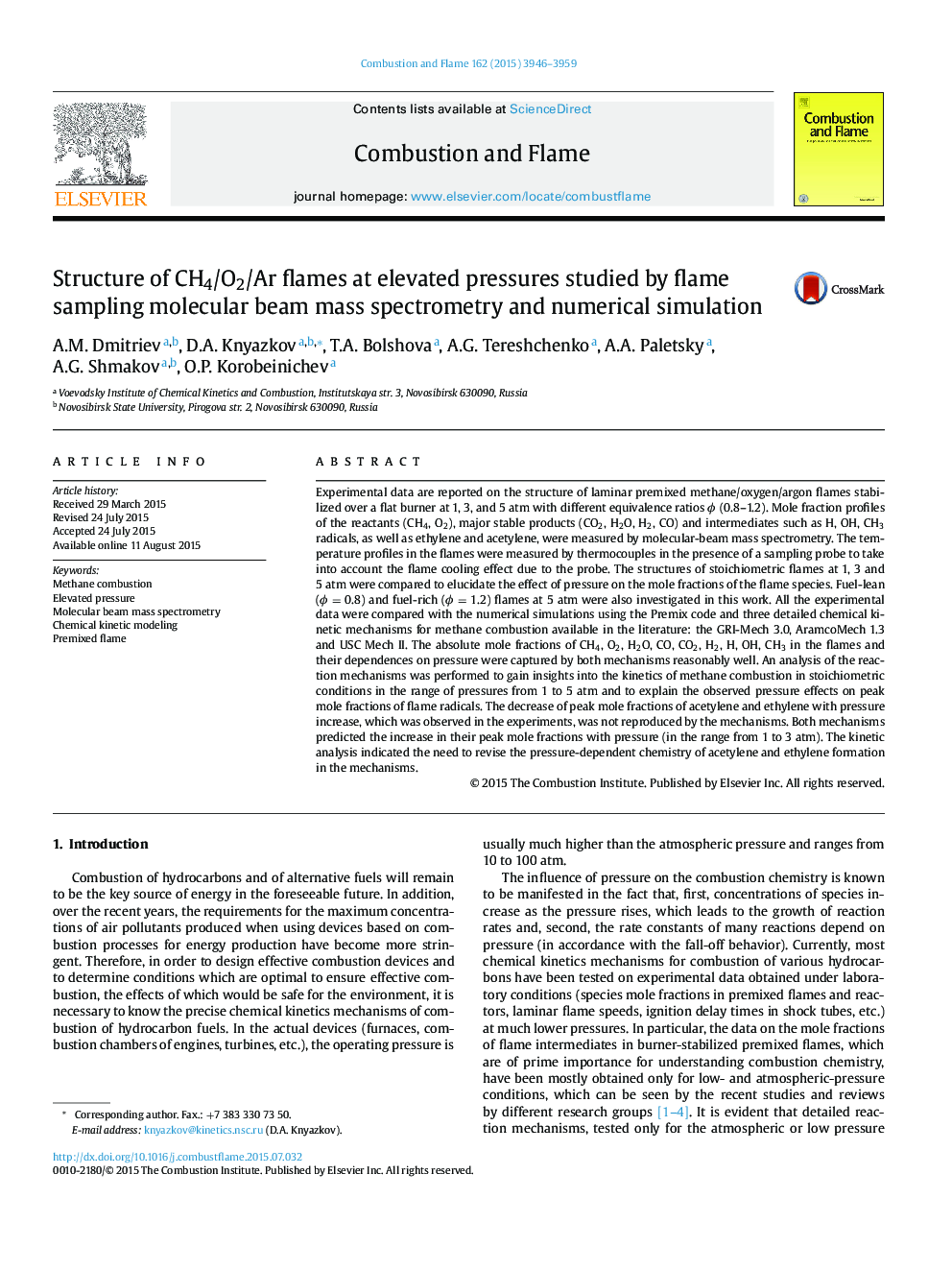| کد مقاله | کد نشریه | سال انتشار | مقاله انگلیسی | نسخه تمام متن |
|---|---|---|---|---|
| 10264785 | 458013 | 2015 | 14 صفحه PDF | دانلود رایگان |
عنوان انگلیسی مقاله ISI
Structure of CH4/O2/Ar flames at elevated pressures studied by flame sampling molecular beam mass spectrometry and numerical simulation
دانلود مقاله + سفارش ترجمه
دانلود مقاله ISI انگلیسی
رایگان برای ایرانیان
کلمات کلیدی
موضوعات مرتبط
مهندسی و علوم پایه
مهندسی شیمی
مهندسی شیمی (عمومی)
پیش نمایش صفحه اول مقاله

چکیده انگلیسی
Experimental data are reported on the structure of laminar premixed methane/oxygen/argon flames stabilized over a flat burner at 1, 3, and 5Â atm with different equivalence ratios Ï (0.8-1.2). Mole fraction profiles of the reactants (CH4, O2), major stable products (CO2, H2O, H2, CO) and intermediates such as H, OH, CH3 radicals, as well as ethylene and acetylene, were measured by molecular-beam mass spectrometry. The temperature profiles in the flames were measured by thermocouples in the presence of a sampling probe to take into account the flame cooling effect due to the probe. The structures of stoichiometric flames at 1, 3 and 5Â atm were compared to elucidate the effect of pressure on the mole fractions of the flame species. Fuel-lean (ÏÂ =Â 0.8) and fuel-rich (ÏÂ =Â 1.2) flames at 5Â atm were also investigated in this work. All the experimental data were compared with the numerical simulations using the Premix code and three detailed chemical kinetic mechanisms for methane combustion available in the literature: the GRI-Mech 3.0, AramcoMech 1.3 and USC Mech II. The absolute mole fractions of CH4, O2, H2O, CO, CO2, H2, H, OH, CH3 in the flames and their dependences on pressure were captured by both mechanisms reasonably well. An analysis of the reaction mechanisms was performed to gain insights into the kinetics of methane combustion in stoichiometric conditions in the range of pressures from 1 to 5Â atm and to explain the observed pressure effects on peak mole fractions of flame radicals. The decrease of peak mole fractions of acetylene and ethylene with pressure increase, which was observed in the experiments, was not reproduced by the mechanisms. Both mechanisms predicted the increase in their peak mole fractions with pressure (in the range from 1 to 3Â atm). The kinetic analysis indicated the need to revise the pressure-dependent chemistry of acetylene and ethylene formation in the mechanisms.
ناشر
Database: Elsevier - ScienceDirect (ساینس دایرکت)
Journal: Combustion and Flame - Volume 162, Issue 10, October 2015, Pages 3946-3959
Journal: Combustion and Flame - Volume 162, Issue 10, October 2015, Pages 3946-3959
نویسندگان
A.M. Dmitriev, D.A. Knyazkov, T.A. Bolshova, A.G. Tereshchenko, A.A. Paletsky, A.G. Shmakov, O.P. Korobeinichev,